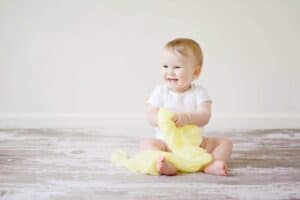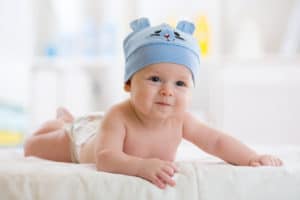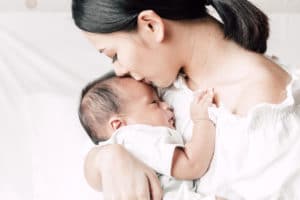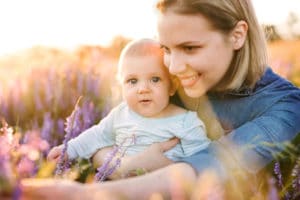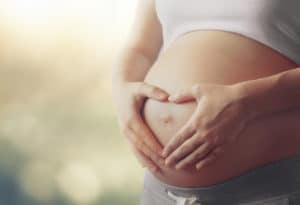Cradle cap and head gneiss are often confused with each other. A cradle cap is an inflammatory skin change in the area of the scalp of babies. In most cases, a cradle cap appears from the third month of life. Typical of cradle cap in babies is the hard, slightly yellowish crust and scales. Usually, the affected children have to struggle with severe itching.
Head gneiss, on the other hand, looks similar to cradle cap. However, it does not itch and is absolutely harmless in other respects. In fact, it’s usually headgneiss that can occur in almost every second infant. It often takes several weeks to months until the scales have completely disappeared from the head of the dear little one.
Table of contents
Cradle Cap Or Head Gneiss?
Cradle cap (atopic dermatitis) is much less common than headgear. Although the name suggests otherwise, the skin disease is in no way related to a milk allergy or cow’s milk intolerance.
Certainly, cradle cap looks like burnt milk. In fact, however, cradle cap is a preliminary stage of neurodermatitis. However, this does not necessarily mean that neurodermatitis will develop over time. In most cases, the symptoms are completely a thing of the past after about two to three years.
What Is Cradle Cap?
The child’s scalp is reddened and yellowish crusts and scales appear, especially in the area of the middle front of the head, from about the 12th week of life. In addition, it is possible that the child’s cheeks, forehead, and little arms and legs also show these visual changes.
Previously, the skin appears dry, it tightens. At the same time, many affected babies suffer from itching. Scratching can inflame the scaly areas, whereupon the weeping, yellowish crusts develop.
Because of the intense itching, many babies are often restless, and they have trouble falling asleep. They also usually struggle with sleep problems. Sometimes they even violently resist being put to bed because they associate this with something negative due to the itching. As a result, they are often cranky, restless, and cry a lot during the day. A real burden, then – for them and their parents.
Worth Knowing
Babies who suffer from cradle cap are at a higher risk of developing neurodermatitis in childhood or adolescence. In addition, according to current statistics, they suffer far more frequently from hay fever.
Possible Causes For The Development Of Cradle Cap
Experts are still not in complete agreement as to why cradle cap develops. It is assumed that mainly external factors play a role in this regard. Other experts, however, are of the opinion that cradle cap is hereditary. The risk of developing cradle cap is particularly high under these conditions.
If the child tends to have dry skin, this could favor the development of cradle cap in the baby .Hypersensitivity to external stimuli, such as textile materials, heat or cold often indicates that cradle cap could form in the baby.
If your baby is allergic to cow’s milk or to foods containing egg, this is sometimes a sign of the possible development of cradle cap in the baby.
These Symptoms Are Characteristic Of Cephalic Eschar
Because the outward appearance of cradle cap and head urticaria are very similar, the risk of confusion is high. In most cases, there is a severe scaling of the scalp. These are usually greasy, soft, and yellowish in color. Sometimes there is also a slight crust formation.
, Unlike cradle cap, however, cephalic gneiss does not itch. The true triggers of cradle caps in babies have not yet been 100 percent determined. In contrast, it is certain that only increased sebum production, so-called seborrhea can be held responsible for cephalic necrosis.
The Symptoms Of Headgear
Experts believe that the mother’s hormones during pregnancy have a stimulating effect on the baby’s sebaceous glands. If the hormonal activity stabilizes, the head gneiss will also disappear soon. When the child reaches puberty, the activity of the sebaceous glands will again be at full speed.
Cradle cap in babies usually occurs in the first three months of life and may well persist for several years. In contrast, head urticaria occurs exclusively in the first weeks of life and often subsides after about a few months.
Notice
Headgeneis is not an indication that your child will later suffer from neurodermatitis. Unlike cradle cap, this skin change is completely harmless. It will not have a lasting effect on your baby’s health.
How To Treat Cradle Cap
Cradle cap does not necessarily need to be treated. However, you can rub baby oil on your baby’s scalp to remove the sometimes unsightly scaling. Be careful when you do this because the head is extremely sensitive.
Leave the oil on for a short time and then go over the scalp with a soft baby comb. In this way, you care for the skin, nourish the hair of your child – and at the same time, a large part of dandruff and crusts is removed.
If your baby suffers from the inflammatory skin disease, you should definitely remove the cradle cap. Because if the cradle cap can be removed, the itching can also be alleviated.
Treating Cradle Cap – This Is How To Do It Gently And Carefully
The scales caused by cradle cap usually cause very annoying itching. Therefore, you should definitely treat this skin change so that your little treasure will soon feel better again.
When the baby scratches the itchy areas, the corresponding area becomes sore. Germs, bacteria and other pathogens now have an easy time and can penetrate directly into the skin.
Removing cradle cap eliminates the scales and crusts. At the same time, you also avoid a possible risk of infection. Last but not least, the pediatrician who will treat the cradle cap has a better view of the skin and can therefore make a targeted diagnosis. Along with this, the treatment will also be more effective.
Treat Cradle Cap With Care
If you want to treat cradle cap, you should avoid removing crusts by scratching. Never use your fingernails, because your baby’s skin is extremely sensitive.
It is best to use baby oil, petroleum jelly or cocoa butter to treat dandruff. Let the fragrance-free natural product soak into the skin for a while so that the dandruff comes off more easily later.
It Is Best To Leave It To Work Overnight
After the soaking time, gently stroke the scalp with a comb to remove the cradle cap. Then rinse your child’s scalp with fragrance-free, mild baby shampoo. Make sure that all oil residues are removed, otherwise, the pores could become clogged. This in turn would cause further skin problems.
As a rule, the pediatrician will prescribe an oil containing silicone to treat the cradle cap gently and carefully. In addition, to treat or relieve itching, you can apply oily-moist compresses. A little aloe tincture or chamomile extract applied to the fabric will have an anti-inflammatory and mild disinfectant effect.
Tip
Regardless of whether it is a medicinal product or oil, experience has shown that treating cradle cap just once is usually not enough. Several applications are usually necessary to treat the scaling in the long term.
Certainly, it takes a certain amount of time to treat cradle cap. So that your child does not perceive this procedure as a burden, talk lovingly to him or sing to him during the procedure. Cuddles and little games in between also make it more pleasant for you and your child to remove the cradle cap.
You should know that the long-term use of oils in the area of the baby’s scalp is not recommended. Dermatologists suspect that under certain circumstances this could impair the development of the skin barrier.
Alternatively, you can treat the cradle cap with a shampoo containing urea or salicylic acid. However, it is important in this regard that the urea content is as low as possible, as this substance could have a slightly irritating effect on the baby’s skin.
Shampoos containing salicylic acid should therefore be given preference. However, even with these products, long-term use is not recommended under any circumstances, because salicylic acid can enter the baby’s organism via the highly sensitive baby skin in particular and trigger possible allergic reactions.
Tip
If the cradle cap persists and you do not want to use oils or shampoos, it is essential to visit your pediatrician again. If necessary, he will prescribe a cortisone cream to accelerate the healing process of the skin inflammation.
It will also relieve the itching. In combination with anti-inflammatory skin care, it is even easier to remove cradle cap.
What Else You Can Do To Treat Cradle Cap
Your child’s fingernails should be cut as regularly as possible. This reduces the risk of cracks or small wounds developing from scratching the scalp. Before going to bed, you can put thin gloves on your little treasure to prevent it from scratching its head with its fingernails.
You can soothe the itching with greasy, moist wraps. You should treat your child’s scalp with a moisturizing cream. This provides optimum care for dry skin and reduces the formation of dandruff.
By The Way
Heating air and air-conditioned rooms can promote the development of cradle cap. Make sure that there is always a humidifier or at least a bowl of clean water in your child’s bedroom.
Sources
https://www.penaten.de/milchschorf-kopfgneis
https://www.babymarkt.de/ratgeber/baby/baby-gesundheit/milchschorf/


